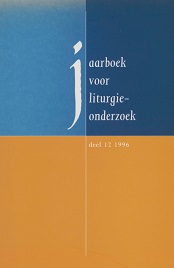Natuur, gevoel en rede. De ontdekking van het gelovige volk rond 1800
Abstract
Around 1800 both the late Enlightenment and early Romanticism influenced the definition of religion: religion within the boundaries of reason; religion based on a natural sentiment or on the experience of beauty. All these definitions of religion showed a common interest in the subjects of religion: the faithful. An example of this discovery of the faithful was Friedrich Heydenreich's book Ueber den Charakter des Landmannes in religiöser Hinsicht (1800). The 'common people' were discovered as exponents of a characteristic kind of religious behaviour, just as early folklore studies in the late 18th century had discovered the people as exponents of 'popular culture' (Volkskultur). This newly discovered popular religion was not yet respected in its own right, but was mainly seen as in need of discipline and education. The pre-eminent means to achieve this, was pastoral care, as is reflected in the first handbooks of pastoral or 'popular' theology. In this pedagogic approach of popular religion liturgy was mainly seen as a vehicle for moral education. Only later in the 19th century a more respectful approach of popular religion gained ground.


